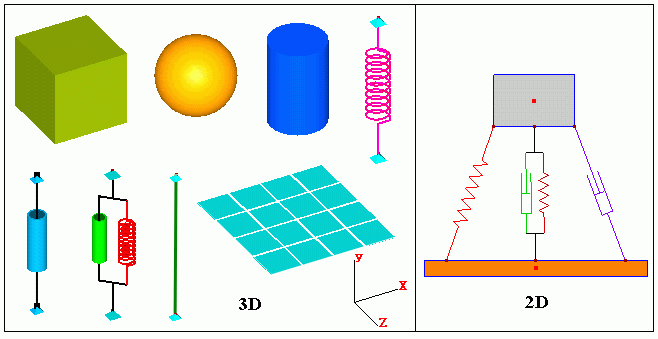
FER/Mech is developed by using C++ language with the support of OpenGL graphical library on the environment of Microsoft Visual C++ developer studio. With the techniques of object oriented programming and OpenGL programming as well as some new geometrical algorithms, it produces the high image quality and allows to visualize and to operate very easily the computational results.
The main capabilities of FER/Mech include :
Create geometry model 2D and 3D

Define objects properties
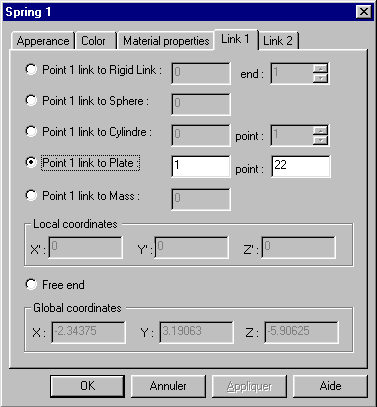
Define boundary conditions
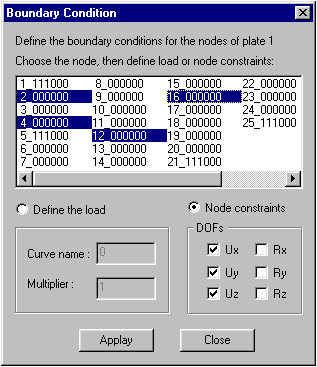
Animation
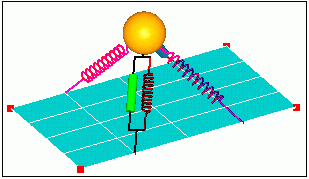
Define load curve
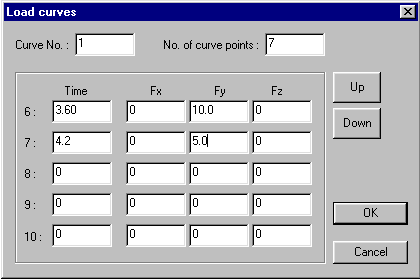
Dynamic loading
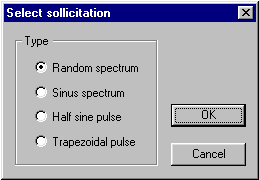
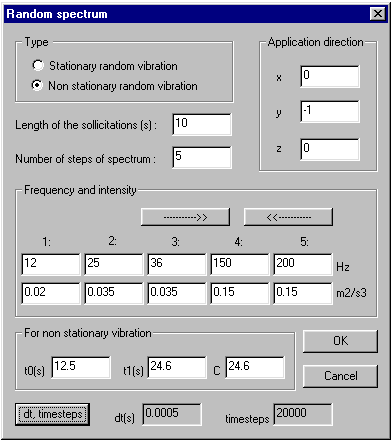
Solver option
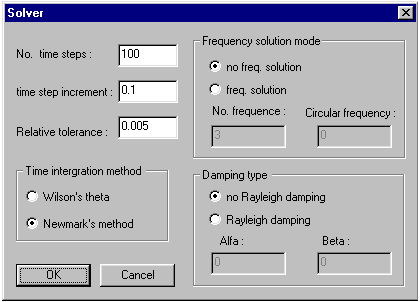
XY plot
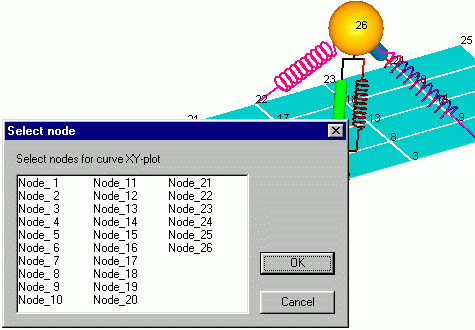
1, Select node
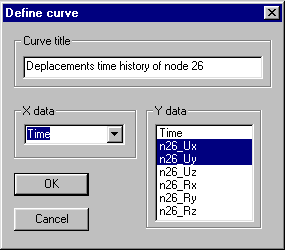
2, Select X, Y data item
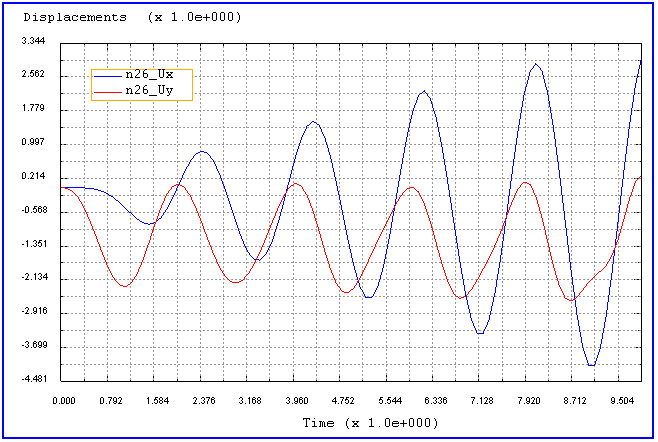
3, Plot curves
Validation
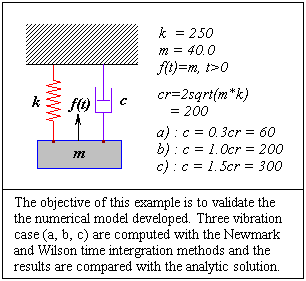
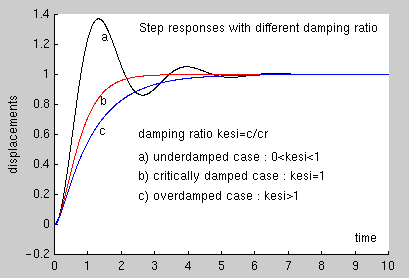
| time Newmark Wilson analytic results | Matlab program for the analytic solution |
| a). Results for undamped case (c<cr)
1.00 1.2414465e+00 1.2415120e+00 1.2354857e+00 2.00 1.0573239e+00 1.0573328e+00 1.0603905e+00 3.00 9.0673845e-01 9.0669271e-01 9.0597429e-01 4.00 1.0512690e+00 1.0513037e+00 1.0511105e+00 5.00 9.8559649e-01 9.8558495e-01 9.8587257e-01 6.00 9.9845190e-01 9.9844955e-01 9.9829971e-01 7.00 1.0042779e+00 1.0042834e+00 1.0043202e+00 8.00 9.9740694e-01 9.9740337e-01 9.9741190e-01 9.00 1.0008265e+00 1.0008276e+00 1.0008138e+00 10.0 1.0000110e+00 1.0000111e+00 1.0000185e+00 b). Results for critically damped case (c=cr)
c). Results for overdamped case (c>cr)
|
%compute a step response of spring-mass system
%by selecting the load f(t) = m, t>0, k=250;
%spring constant
% a). underdamped case : 0<kesi<1;
% b). critically damped case : kesi = 1;
% c). overdamped case : kesi > 1;
|